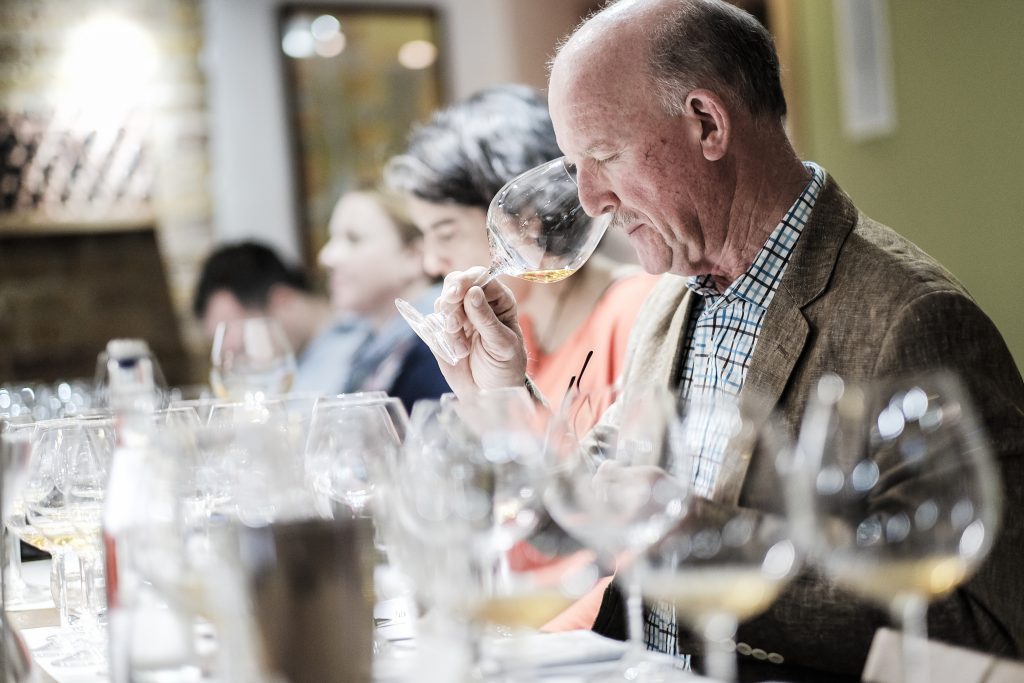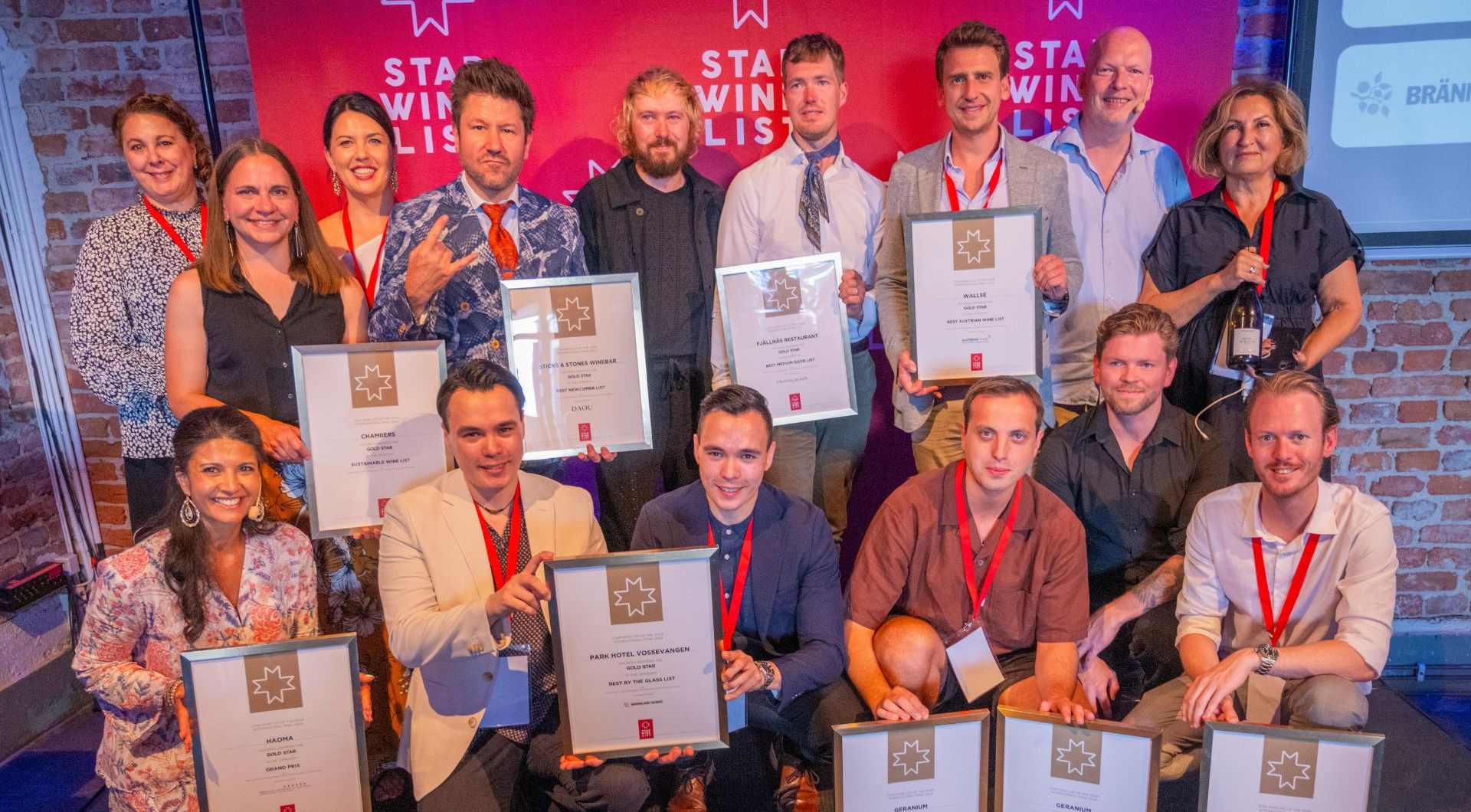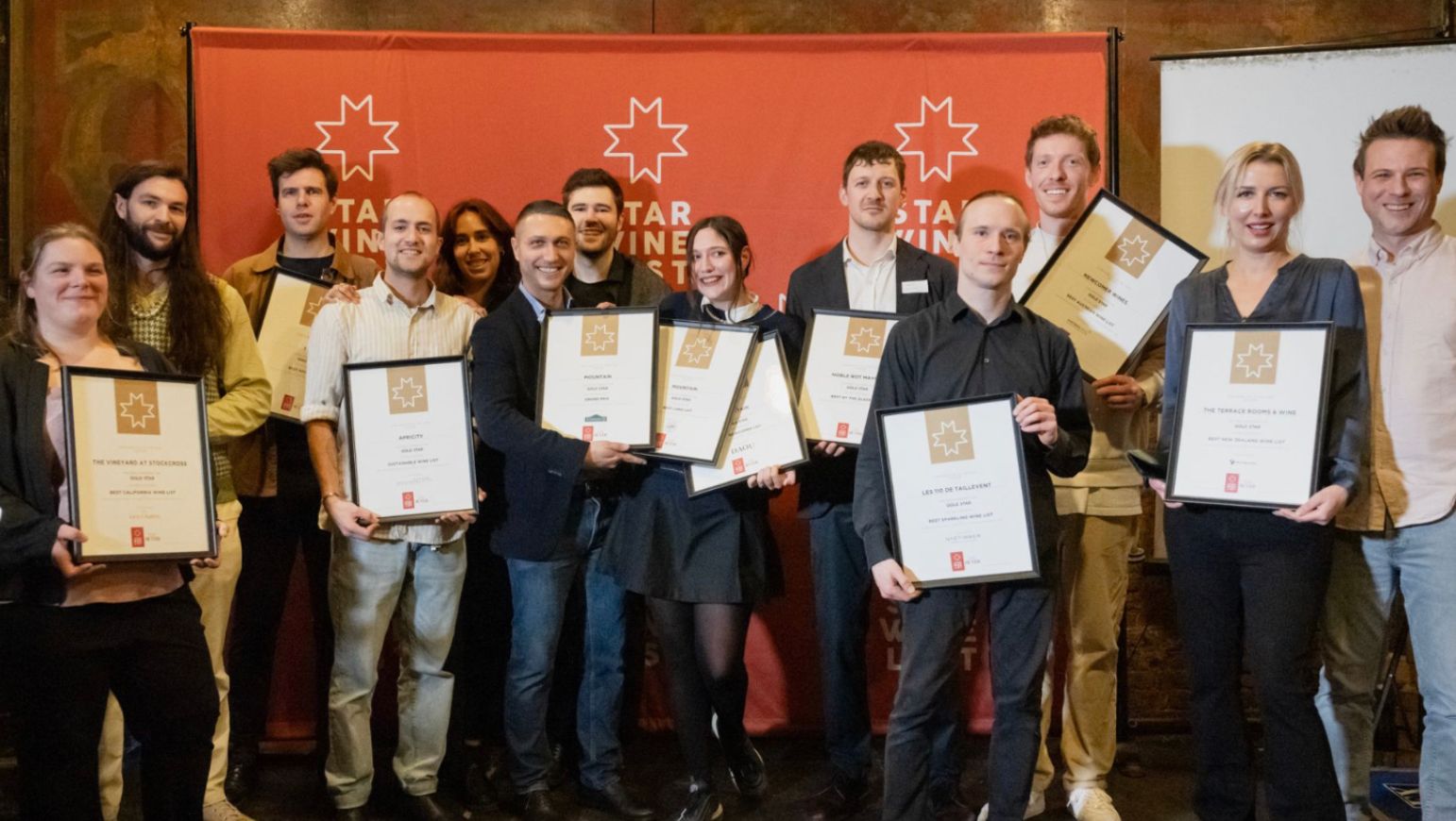If you still have to be convinced that premium Australian Chardonnay is a must for any discerning wine list then please spare five minutes to share The Buyer’s ringside seat at two key trade events last month.
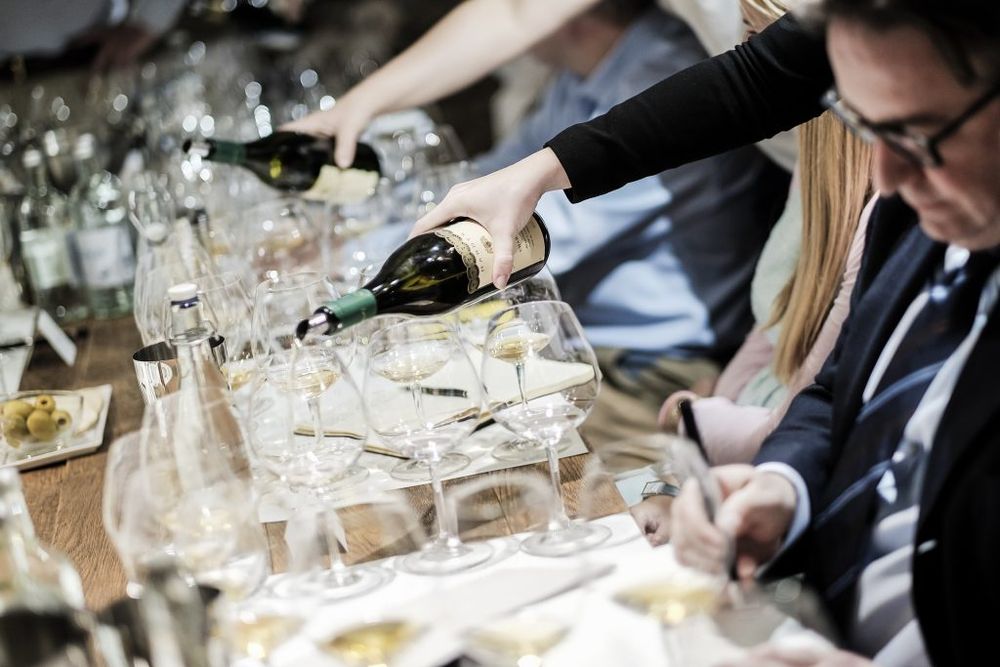
Just 29 more to go…a unique opportunity to see Australian Chardonnay evolve over the last 30 years with the London 30 Years of Eileen Hardy tasting
There has been much talk in the trade in recent months about how Australia has turned the corner and is slowly winning back the hearts of premium wine drinkers.
Yes, those who were first entranced by its big white, oak heavy numbers in the late 1980s and 1990s, but went to away to softer climes in the 2000s, are slowing coming back enticed by news of how Australian wines, particularly its whites, are changing.
How much of this is trade talk it’s hard to know, but the wines are certainly talking for themselves with constant reminders at any serious Australian wine tasting of the new fresher, cleaner, less oaky, more refreshing, and acidic wines that are now being made across the board in Australia.
The Buyer was able to see this for itself last month at two landmark wine events, held days apart from each other.
First up was the opportunity to join members of the Australian Hardy wine family and take a fascinating trip in to the past with a 30-year vertical tasting of its prestigious Eileen Hardy wine, hosted by owners, Accolade Wines.
Then the following week came the chance to put modern style Chardonnays to the test as Roger and Sue Jones’ hosted its 10th annual Mamba wine competition at their Michelin-starred The Harrow at Little Bedwyn. Here a palate challenging 69 Chardonnays were pitted against each other, all produced within the last four years, showcasing the very best of what Australia can now do.
30 of the best
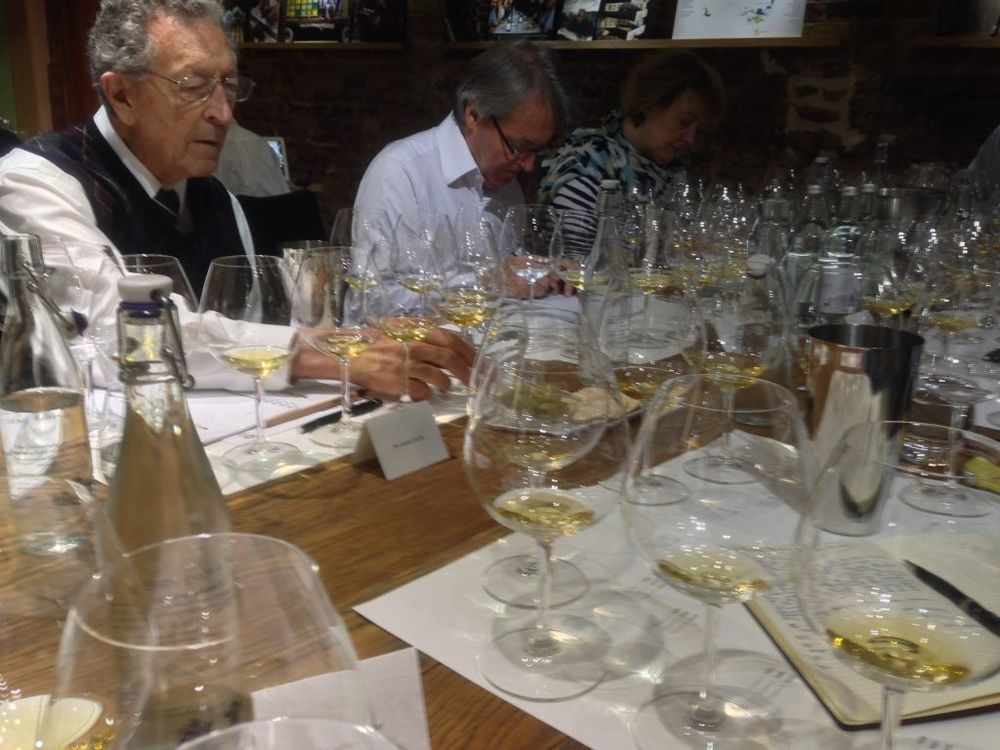
Sir James Hardy with Steven Spurrier at the tasting
But first to the Eileen Hardy event, hosted at Berry Bros & Rudd in St James’s, London.
It was, essentially, a wonderful opportunity to see first hand how the style of Australian Chardonnay has developed, changed and adapted over the last 30 years.
But it was also a reflection of how the overall Australian wine industry has also evolved and become so much more knowledgeable and insightful about how its different soils and wines regions behave with different grape varieties. Which in this event was Chardonnay.What was particularly fascinating to see were the big step changes in taste and style of Chardonnay, at key points, over the last 30 years. Particularly when new regions came on board or there was a switch to screwcap.
What was particularly fascinating to see were the big step changes in taste and style of Chardonnay, at key points, over the last 30 years. Particularly when new regions and soil types came on board or were blended together.The Eileen Hardy event was attended by her son, Sir James Hardy, a fifth generation Hardy, and his wife, and Bill Hardy his nephew.
The Eileen Hardy event was attended by her son, Sir James Hardy, a fifth generation Hardy, his wife, Joan, and Bill Hardy, his nephew, who had been responsible for personally making the Eileen Hardy Chardonnays through the 1980s.
They spoke of how the Eileen Hardy wine brand was actually first created in 1973 to mark her 80th birthday. With the first wine in her name being a McLaren Vale Shiraz (1970 vintage).
Hardy’s group white winemaker, Tom Newton, may not be a direct member of the family, but he has been with the business long enough to know just a little about how it ticks.
In fact, he first came on board in 1982 some four years before the first Eileen Hardy Chardonnay was produced.
He concedes Hardy’s was not the first to produce Chardonnay in Australia. That prize probably goes to the Tyrells, he said.
But once they had got their teeth in to Chardonnay it quickly became a popular grape variety to work with as, said Newton, it gives winemakers such a “canvas to work on”. “There is so much you can do that will directly influence the wine with Chardonnay,” he added.
Which is probably why it has had such a chequered history over the years as it has been easily adapted to suit whatever flavour profile was fashionable at the time.
Distinct changes
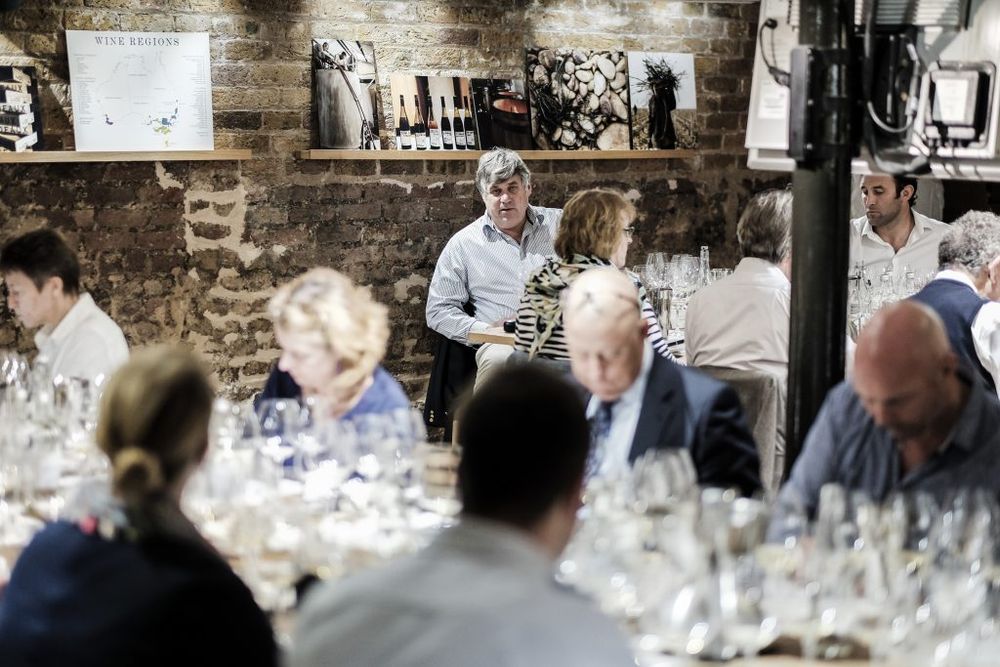
Tom Newton has been making Hardy wines since 1982.
Whilst the changes to the Eileen Hardy Chardonnay have been more subtle over the years, the tasting clearly demonstrated how the styles of Chardonnay have evolved over the years.
Particularly the influence of using grapes grown from the more cooler climate regions of the country. “They allowed you to build so much more texture in to the wines,” said Newton.
Initially all the Eileen Hardy wines were made from Hardy’s vineyards in Padthaway, in the south east of South Australia. Then in 1992 grapes from the cooler Yarra Valley in Victoria were used in the blend, followed by seriously cool climate, Tasmania in 1996.
Then in 1992 grapes from the cooler Yarra Valley in Victoria were used in the blend, followed by Tasmania in 1996.
“You can see how the wines have evolved to become richer, deeper with more honey hues,” said Newton.
A point quickly picked up by Decanter’s Steven Spurrier: “The acidity in these wines just keeps them so fresh and integrated all these years later.”
My own experience tasting the wines through the mid 1990s and onwards was how between 1998 and 1999 it was like switching over to an HD channel such was the greater depth, richness and complexity in the wines. The big change here came in the blend, which saw Padthaway in 1998 replaced by Tasmania in the Yarra Valley and Adelaide Hills blend in 1999.
A point picked up by Peter Richards MW. “There is a completely different palate structure here, the beauty of the Chardonnay comes through with the killer acidity which is mouth watering.”
The reason for introducing different regions, explained Newton, was simply to mix up the taste profile. “Tasmania brought more sweetness and length to the wine. It gives you that acidity and juiciness that you want. Whilst the Yarra has those lemon curd and citrus notes,” he explained.
Halcyon years
Bill Hardy said it was from the mid-1990s onwards that its wines started having the right level of “balance and complexity”. “You can see the difference when other regions were started to be introduced,” he said.
It was also between 1996 and 1999 that it was Australia’s white wines, said Newton, that started to pick up the industry’s most prestigious awards, out gunning the reds for the first time in history.
Dan Jago, chief executive of Berry Bros, could easily see why: “These late 1990 wines are showing more freshness than some of the grand Burgundies of that time. That would not have been my pre-tasting perception.”
But as Sir James pointed out, dryly: “The best way of doing anything has not been found yet.”
The modern era
As the tasting reached the modern era, the debate switched to when wines of the last 10 years were at their best to drink.
With many feeling that the 2008, 09 and 10 vintages were arguably still too young to enjoy fully. Newton said it was quite possible to drink an Eileen Chardonnay straight away, but “they get more complex after six years”.
Equally it will depend on the different growing conditions of each vintage, he stressed.
Rare opportunities
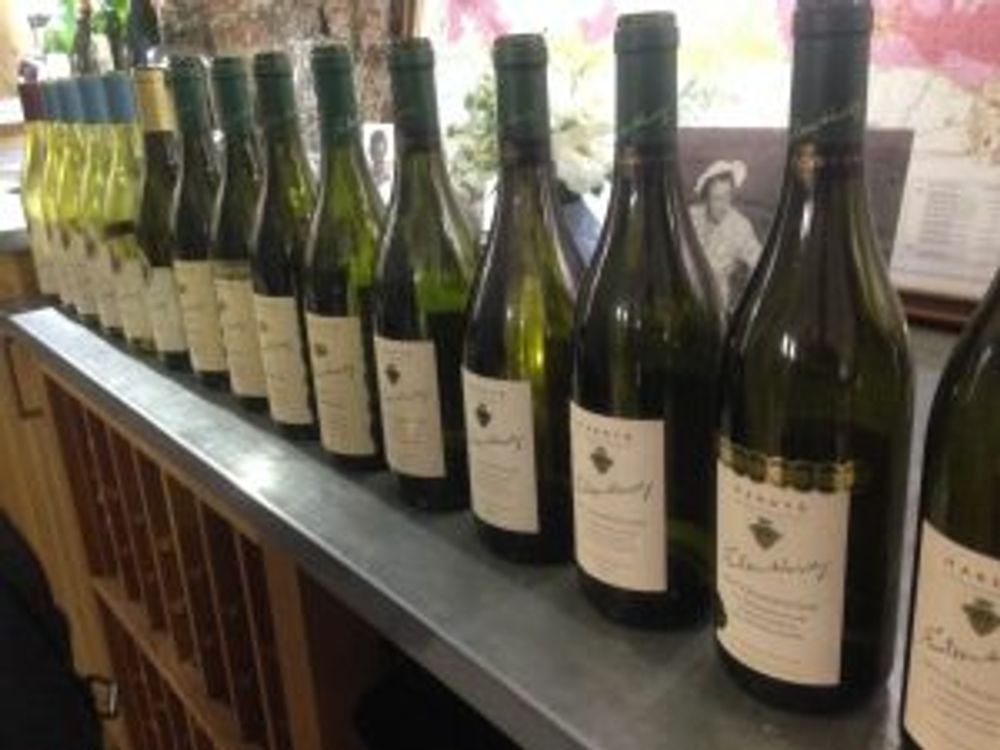
30 green bottles…
The 30-year vintage tasting followed a similar event held at Hardy’s Tinatra winery in May.
Bill Hardy, who attended both, said we had been so lucky to have each of the wines drinking and presenting themselves so well. “I really can’t believe these wines. I am just so impressed that they are all still alive and even the early ones have not fallen over.”
An admittedly strange experience for him considering he was in charge of putting together the first five vintages from 1986 to 1990 himself. “We thought even back then we were doing some frontier winemaking,” he said.
But he concedes most Australian winemakers up to the mid-1980s were guilty of interfering a little too much with the wines because they had been brought up making Riesling where they needed to be doing different kind of treatments, ferments and using selected yeasts
“It took us a while to realise what possibilities there were with Chardonnay,” he said.
Newton agreed: “When we first stated we wanted to make the cleanest style of wine possible. It is so far away to how we make the wines now.”
Reflecting on the overall tasting, Spurrier said he was surprised to find a distinct house style across the wines, even though so many different regions and winemaking techniques had been used in making them. “It really is extraordinary,” he said.
The style, stressed Newton, that it is ideally looking for is to have wines with “sweetness, freshness, brightness and juiciness”. “Wines with that drinkability factor,” he added.
Bill Hardy summed up the event when he said: “We might be a big company, but we are still trying to make the best wine for that particular vintage.”
Mamba awards – a celebration of Australian Chardonnay

Roger and Sue Jones (The Harrow at Little Bedwyn), Laura Jewell (Regional Director UK & Europe Wine Australia), Martin Sheen (Field, Morris & Verdin) and Steve McGraw (MD Riedel UK)
The Hardys are not alone and that desire and commitment to strive to make the best wines possible was there for all to see at Roger and Sue Jones’ Mamba tasting at The Harrow in Little Bedwyn. Here the idea is to shine a spotlight on what Australia is doing across a couple of varieties each year and bring some of the best wines to the trade. This year’s chosen two were Chardonnay and Pinot Noir. In the Chardonnay competitiont virtually all the main Australian producers were represented demonstrating time and again the consistency and excellence there is now in Australian Chardonnay.
In the Chardonnay competitiont virtually all the main Australian producers were represented demonstrating time and again the consistency and excellence there is now in Australian Chardonnay.
Steven Spurrier, one of 80 trade guests invited, summed up the truly high standard of wines: “There was hardly a bottle that I marked less than 17/20 or 90/100 and many considerably higher. The expression of fruit overall was admirable and where oak was used it was well blended in. For me, tasting such a range from every single Chardonnay producing region in Australia was both a revelation and an education, a convincing overview that showed the country as second only to France as far as Chardonnay is concerned.”
Top Chardonnay prize for the evening went to a wine that I actually tasted first out of the 69 on show. The Giaconda 2012 from Beechworth, imported by Fields Morris & Verdin, with a recommended retail price of £95. The fact the remaining 68 did so well to live up to it showed the quality available.
The two runners-up were Tyrrell’s 2007 Vat 47 from Hunter Valley in New South Wales (Fells, £38.49) and Tournon’s Landsborough 2013 from Victoria’s Pyrenees Region (Mentzendorff, £22). The Tournon also won the Yvonne May Memorial Decanter best value wine award.
And the remaining Top 10 in the Chardonnay judging were:
- Tyrrell’s VAT 47 2007, Hunter Valley, John E. Fells
- Tournon 2013, Pyrenees, Victoria, Metzendorff
- Petaluma 2013 Tiers, Piccadilly Valley, Bancroft
- Vasse Felix 2014, Heytesbury, Margaret River, Negociants
- Soumah 2015, Yarra Valley, Vinumterra
- Pierro 2013, Margaret River, Laytons
- Dawson & James, 2011 Tasmania, Liberty
- Dalrymple, 2013, Cave Block, Tasmania Negociants
- Vasse Felix, 2014 Filius, Margaret River, Negociants
